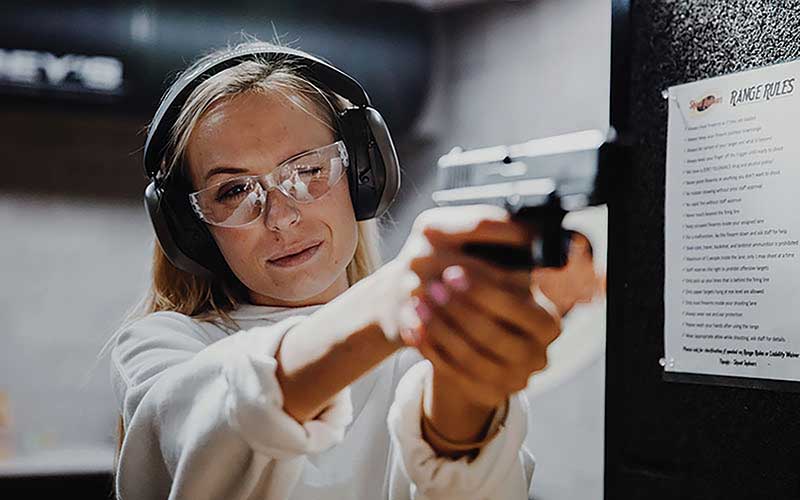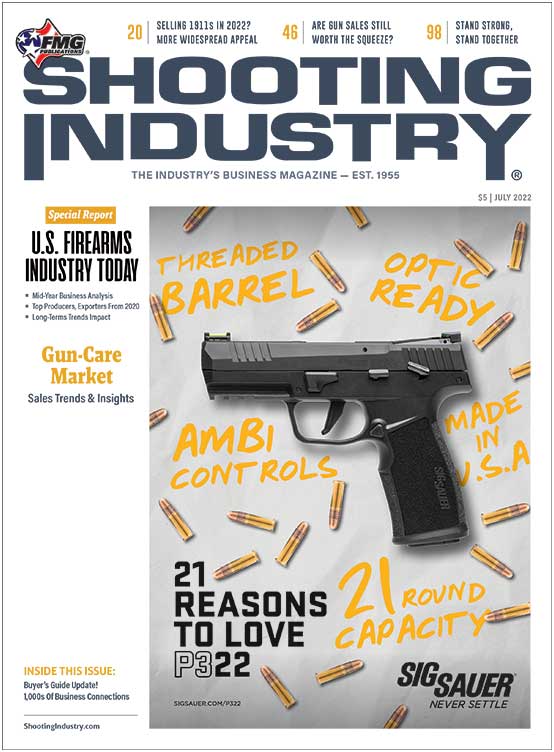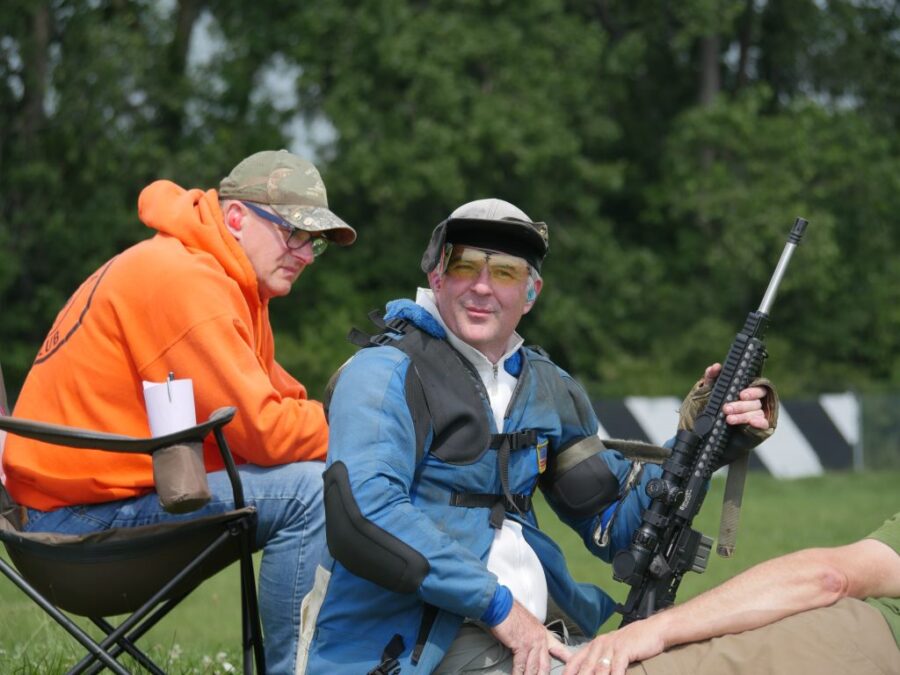Selling Guns Worth The Squeeze?
Something I’ve been seeing as I work with ranges around the country — I just recently passed 500 individual range visits — is less and less focus on the retail part of the industry. This has caused me some sleepless nights. (I know, not much of a life if this is what keeps me up.) But being a 40-year retail guy, I don’t see this reduced retail focus as a good sign for our future.
Evidence of this trend is apparent when looking at one franchisor of indoor ranges — Shoot Indoors (with three ranges in the Denver area and one in Philadelphia) — goes so far as not allowing the franchisees to sell firearms at all. Later in this article, we’ll check in with Shoot Indoors Founder Bryan “B.A.” Stear and hear his reasoning.
Why the trend of ranges either shrinking retail space or, if they’re not shrinking physical space, reducing the amount of inventory dollars per square foot? Follow the money or lack thereof, and the juice just isn’t worth the squeeze anymore. The industry shouldn’t be surprised with ranges reducing focus on retail, when the cost to sell firearms has gone up, while margin dollars have gone down.
“Our industry would do well to show more love to those who provide the best experience (And bring more consumers into the Fold) By giving them some extra juice.”
Ranges — even more so than retail-only stores — are victims of “showrooming.” The consumer comes to the range to test-fire different firearm models, then heads home to order online. (Heck, nowadays they order on their smartphone, even as they’re leaving your store.)
How can we not act like victims here and instead take the opportunity when these showroomers come in, to sell them the firearm onsite? One way is by actually selling, not just showing. To put it another way, offer a good retail experience geared toward converting lookers into buyers. Herein lies one of the problems: Providing a good retail experience takes money and people. If the retailer isn’t making enough margin dollars from selling firearms, why would they want to put even more money and effort into making a good retail experience? The juice just isn’t worth the squeeze.
Let’s go over a few ways to turn those counter lickers into buyers and increase margin dollars without adding a lot of cost.
5 Ways To Overcome Showroomers
1. Incentivize Basic Training.
Offer some very basic training with the purchase of a firearm. This covers three purposes: (1) The new gun buyer learns some basic firearms safety (always a good thing), (2) The range sells more guns and (3) Arguably the most important, these new buyers can be feeders for your other training classes — where you make a lot more money than you made on the original gun sale.
2. They Want To Try It? Charge It.
Another way is to charge for a “try before you buy” offer. For example, a young lady comes in looking for a home-defense firearm. Your staff, after asking some questions to help find her a solution, narrows it down to three firearms. Make an offer: For $20, someone will go on the range with her and she can shoot five rounds through the three firearms selected to see which fits her best/she would like to purchase.
You keep the $20 whether she buys or not (price may need to be adjusted depending on ammo cost). This made you a little money on range time, plus she gets to try your range — hopefully your staff used the time on the range to set the hook on needed accessories and training. It’s important your staff doesn’t offer to throw in the $20 toward the sale; they provided a great service and you need to make a profit from it. After all, I doubt you’re getting range filters for free, or your staff is donating their time.
3. Use Free Range Time As A Carrot.
Speaking of giveaways, in general, I’m against giving free range time with a gun purchase — unless you’re raising gun prices to compensate. At my range, we’d offer one hour of free range time with a gun purchase only if they bought an accessory item, not counting ammo with the firearm. This worked extremely well to sell a lot of high-margin accessories. Plus, more often than not, if you can get someone to buy one accessory it’s like having the dam break and they end up buying many more.
We had a cleaning kit at about the same price as an hour of range time, and would tell the buyer he or she might as well get the cleaning kit — as it’s “free” considering the range time they’d be getting. While the customer was filling out the 4473, we also required staff to bring three accessories that went with the particular firearm to the counter and do a dog and pony show with those items. This is similar to what customers are used to seeing from many web stores that bring up “suggested items” to go along with what they’re buying.
4. Consider MAP-Supported Products.
As covered in my article on MAP items in the Dec. 2021 issue of Shooting Industry (“Margin Boosters”), make time to look over your POS reports that show margin dollars made by each firearm brand and decide if all the brands are earning a spot in your showcase.
Remembering there’s a limited number of spots and capital to devote to the firearms you sell, you need this category to make enough profit to pay the mountain of bills acquired every month. If the margin dollars on a particular brand aren’t cutting it, you owe it to your business to get rid of it and focus on those that are rewarding your efforts.
5. Create Product Bundles.
Of course, in real life there are some brands/models the buying public demands you offer — with very low margins. For these, consider making your own packages by adding a gun case, optic, intro class and pricing as a complete package. At the very least, cut back on your inventory amount and promotions of these low-margin dollar SKUs and put the effort into brands that do make a profit.

By electing to not sell firearms and focus on training/classes, Shoot Indoors has taken a unique
approach to serve customers. Since Shoot Indoors is not competing with FFL dealers, Founder B.A.
Stear says his locations have fruitful relationships with local gun stores — with both business
models reaping the benefits. (Photo: Shoot Indoors)
So, Why Not Sell Guns?
Shoot Indoors’ B.A. Stear shared insights on why he prohibits franchisees from stocking firearms. It turns out it wasn’t one reason, but many that added up to the decision. Number one? The additional cost to sell firearms at each location. It’s not just the additional inventory dollars, you also have additional employees, extra insurance, more sophisticated (read: expensive) software to keep the ATF items in check, buyers’ time to manage the additional inventory control, etc.
As Stear put it, “We’re routinely opening ranges for less than $1 million. If we added firearm sales, the project costs quickly get out of reach for many owner/operators.”
Another benefit to the Stear’s strategy is the great success his franchisees have using other firearms retailers without ranges as a feeder to Shoot Indoors locations — since he isn’t competing with them.
Local gun stores send their customers to Shoot Indoors ranges to rent or try a recent purchase; they reciprocate by sending range customers who want to buy firearms back to these gun stores.
“If a customer liked a gun they just rented, we’ll tell them there are plenty of partner shops that will hook you up with a discount on the purchase,” Stear added.
This relationship with local gun stores has worked so well, Stear’s franchisees spend very little on traditional advertising.
Providing More “Wins”
While the Shoot Indoors model seems to be working for them, most other ranges are still offering firearms — some are just not stocking as many or at least not putting as much focus on them. It’s a bit different from a few years back, when it was thought you just had a range to sell more guns. Now it seems almost the opposite: You stock some guns to sell more memberships and training.
This is concerning in my mind. If ranges (which already have the customers coming in the door to use our products) don’t see it financially beneficial to carry firearms, how long before brick-and-mortar retailers decide the juice isn’t worth the squeeze? Sure, firearms can be purchased from a website and shipped to an FFL, but is that experience the best for bringing a new consumer into our industry and ultimately its long-term health?
“Offer a good retail experience geared toward converting lookers into buyers.”
When I was the director of the range program for a since-kaput distributor, we ran a promotion with GLOCK for the launch of the Gen5 in 2017. GLOCK selected ranges that received 20 of the new models to sell, plus a few to use on the range for try before you buy — all 10 days before other retailers, including big-box and internet discounters. This was a huge success: Consumers were guided by GLOCK to ranges with product in stock and staff was educated and ready to sell. Because the ranges were treated differently (rewarded) from the manufacturer for providing a good consumer experience, they really got behind the promotion. Some of the ranges, like Black Wing in Delaware, Ohio, even opened at midnight to kick it off.
Talk about a win for the consumer, retailer and manufacturer. Our industry would do well to show more love to those who provide the best experience (and bring more consumers into the fold) by giving them some extra juice.
Dealers/range operators — we want to kick this to you: Are gun sales still “worth the squeeze?” Let us know: editor@shootingindustry.com.






